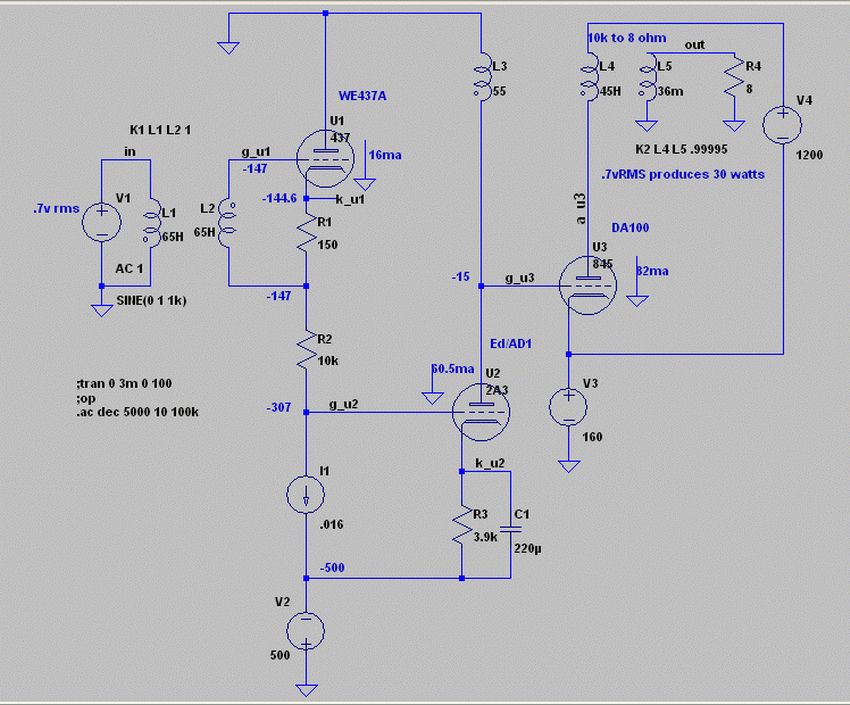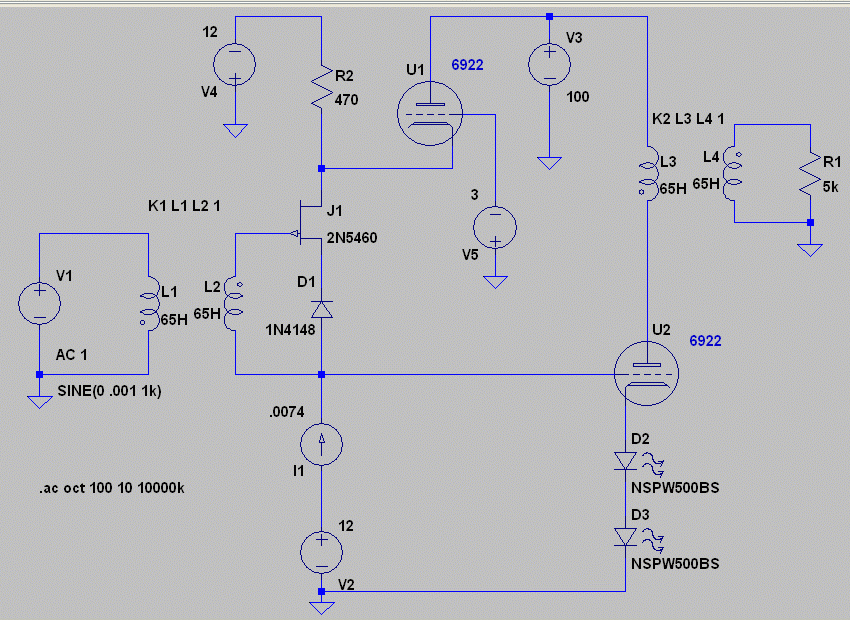
 in the last post i described the silbatone RI25 as a fine example of ultra fi. i am not sure of the price tag outside of korea or japan, but you can’t afford it. if you could, you wouldn’t be reading this… but you can make one! it will not be a RI25. the RI25 has silver wired input and output trans, cobalt amorphous core on the input, and silver foil on the secondary of the nickel cored output trans… good luck with those. silver litz internal wiring, silver mono crystal wire for the power supply. the tubes are unobtainable too. you are not going to find a supply of any of the tubes used… the current sources are Dr. Bae’s doing, and you will have to figure out your own. the chassis and the craft involved is beyond the scope of the general DIYer. however, you can build YOUR own. the first stage could be a host of choices, but the obvious ones would be WE417A/5842, 6C45P, D3a triode wired, 6688 triode wired… etc. the second stage can be 2A3, 45, 50, 10, 801A, RE604, E406N, etc…. the outputs, 211, 845, 242, 276, 284, GM70, etc. this is an architecture that can be extended to bigger and smaller power alike.
in the last post i described the silbatone RI25 as a fine example of ultra fi. i am not sure of the price tag outside of korea or japan, but you can’t afford it. if you could, you wouldn’t be reading this… but you can make one! it will not be a RI25. the RI25 has silver wired input and output trans, cobalt amorphous core on the input, and silver foil on the secondary of the nickel cored output trans… good luck with those. silver litz internal wiring, silver mono crystal wire for the power supply. the tubes are unobtainable too. you are not going to find a supply of any of the tubes used… the current sources are Dr. Bae’s doing, and you will have to figure out your own. the chassis and the craft involved is beyond the scope of the general DIYer. however, you can build YOUR own. the first stage could be a host of choices, but the obvious ones would be WE417A/5842, 6C45P, D3a triode wired, 6688 triode wired… etc. the second stage can be 2A3, 45, 50, 10, 801A, RE604, E406N, etc…. the outputs, 211, 845, 242, 276, 284, GM70, etc. this is an architecture that can be extended to bigger and smaller power alike.
how does it work? first off, the first stage is NOT a cathode follower. it is an upside down grounded cathode amplifier. the secondary of the input trans flies with the signal almost times mu. the current source is why. one finesse of the current source at the cathode is that level shifting to the next stage can be easily accomplished with a simple resistor. very little gain is lost because the impedance of the current source is very high… the quality of the current source does affect the sound. there are many fabulous ways to do it. the choke loading on the Ed (these are nickel chokes made by dave slagle of intact audio, an excellent source of ultra fi inductors) allows a safe near ground anchor for the output tube. even if you pull the driver tube out of the socket, nothing catastrophic will happen… the grid goes to ground. and the output stage is totally conventional. that’s it.
here you see some simple variations that show what can be done with these upside down amps, and how easy it is to directly couple from one stage to the next.

the first one is the basic idea. here is a gain block of 60dB with 1:1 input and output trans. that is using a 6922. it can be adapted to any other tubes you like… the first stage is the upside down stage and the second is rightside up.

the next schemat shows a cascode Gm amp for the upside down stage, and the right side up amp for the second. 74dB of gain. and the following shows a folded cascode amp for the upside down stage and then the right side up. 65dB of gain. 6922 for each stage.
